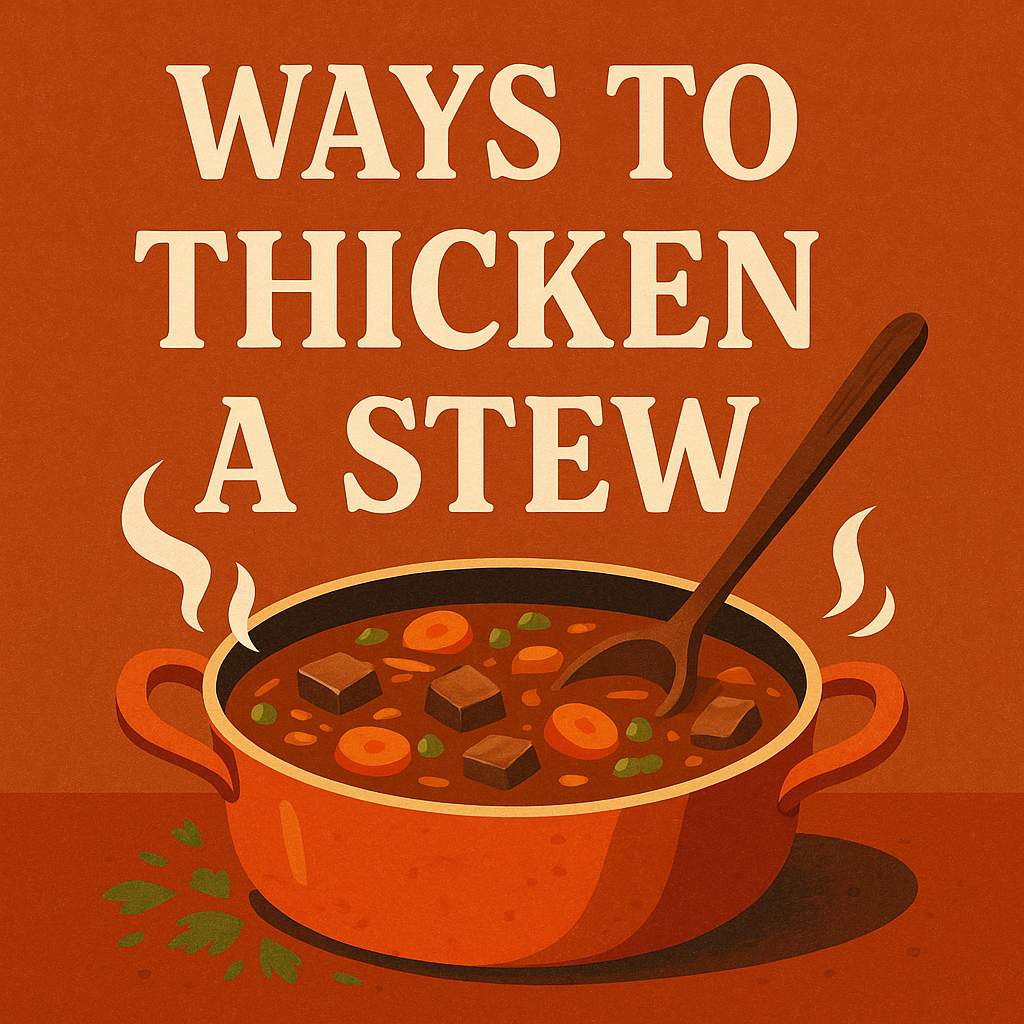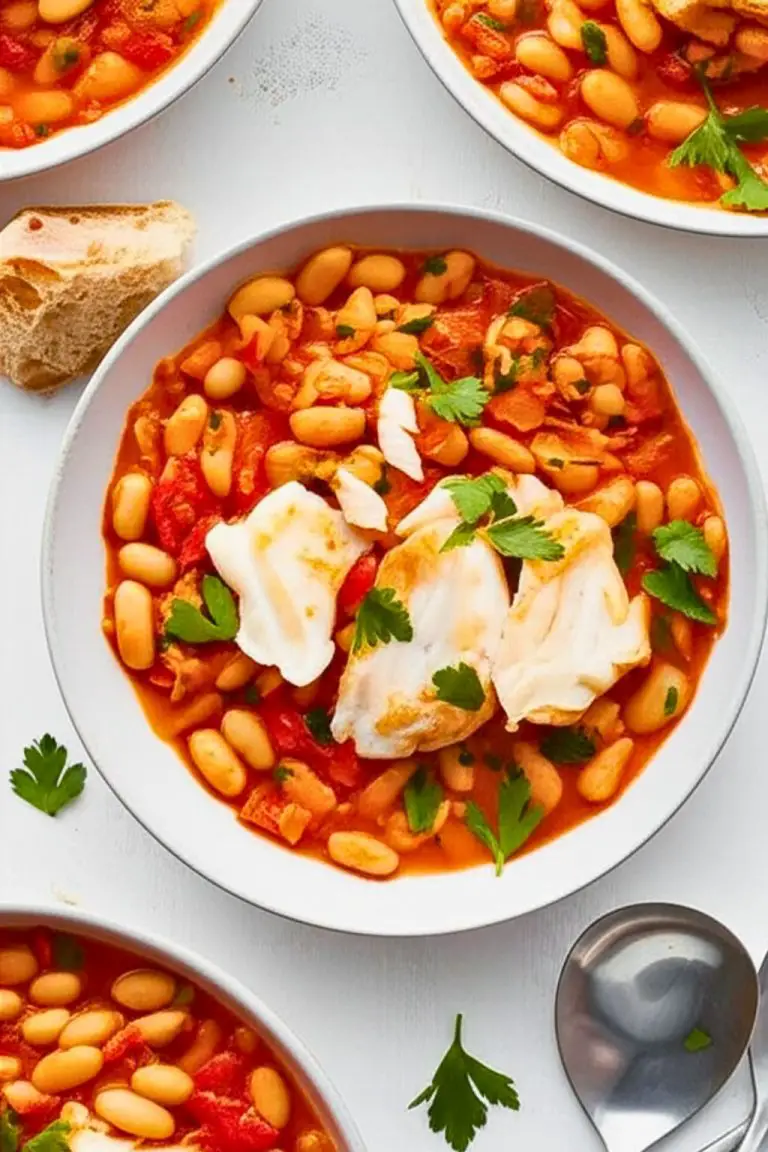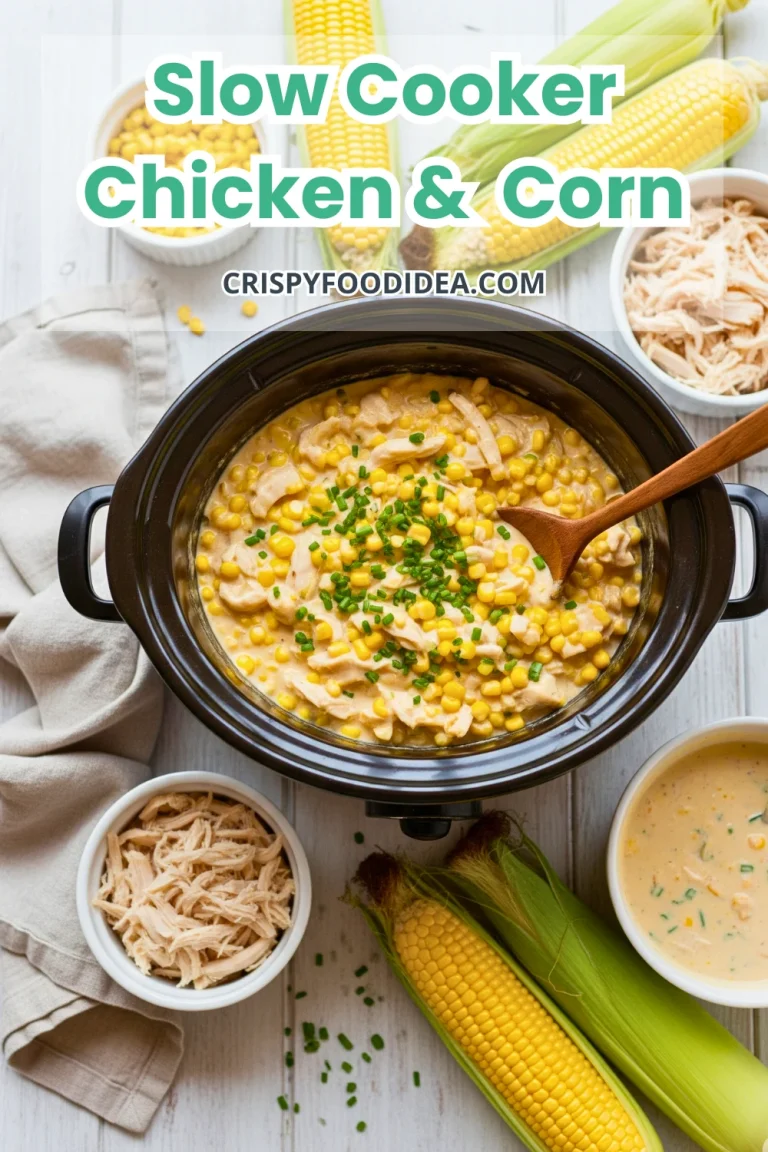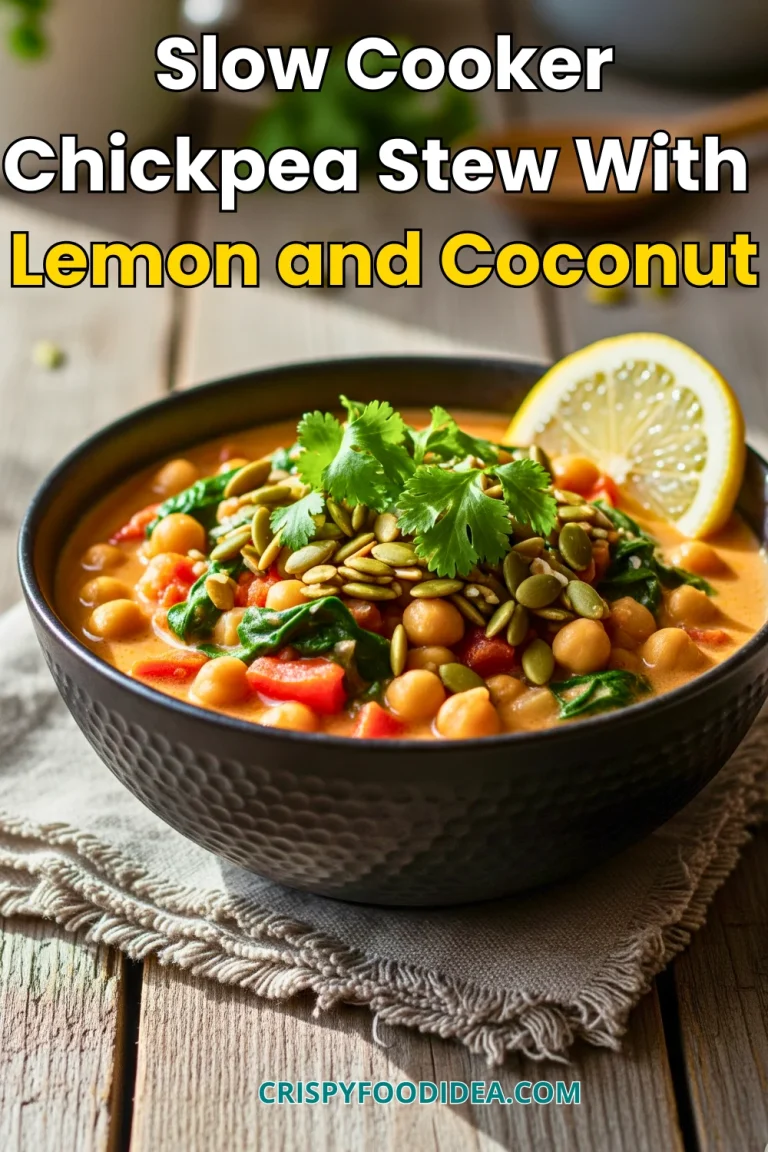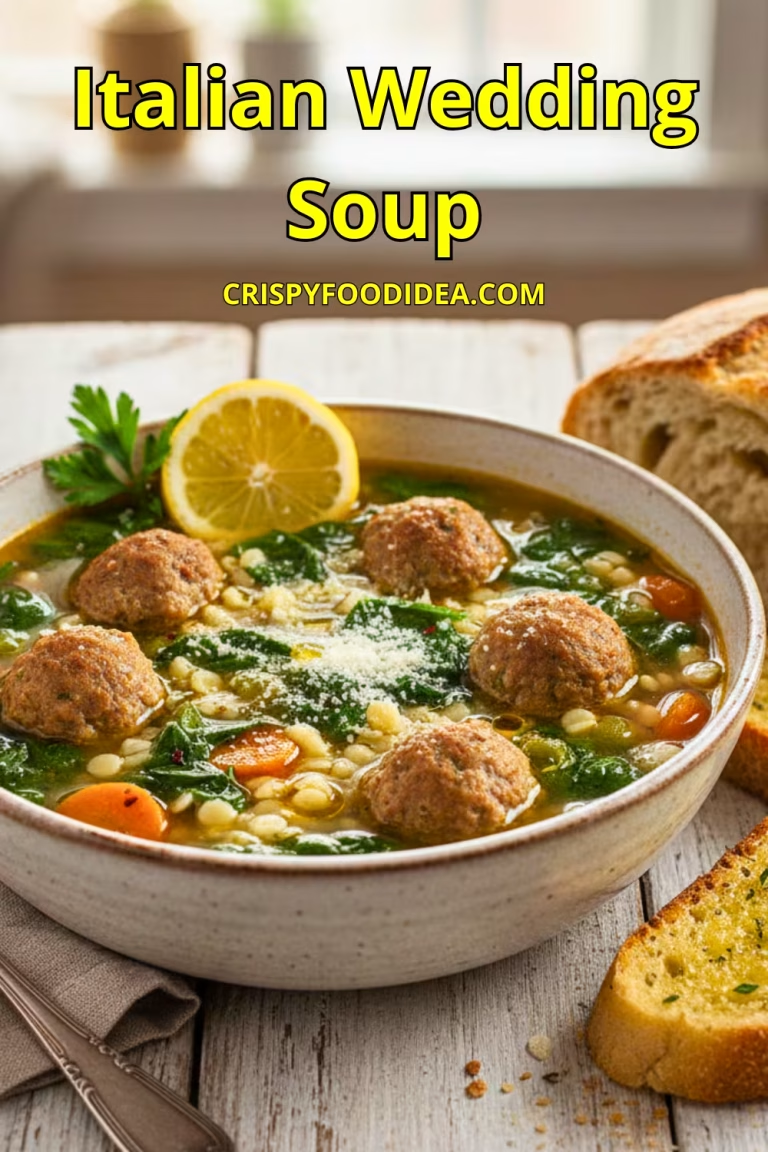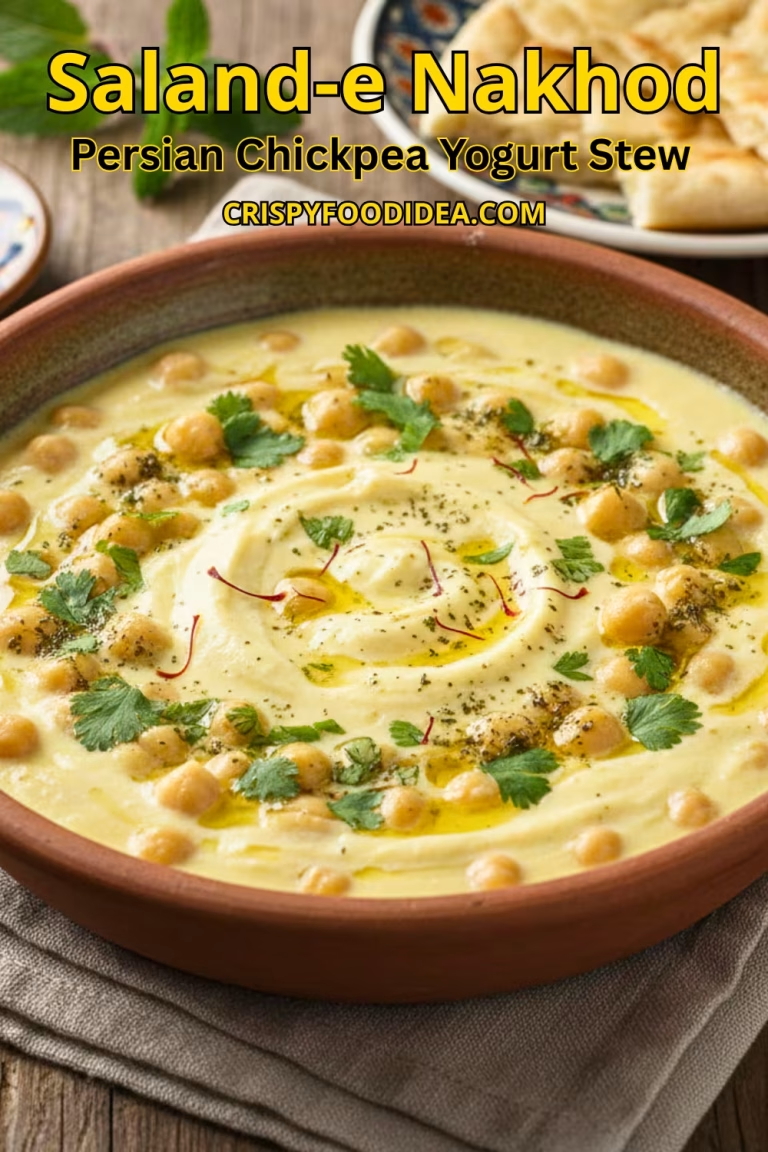10 Best Ways to Thicken a Stew: Easy Tips for a Rich & Thicken Stew
The perfect consistency makes all the difference, whether it’s a slow-cooked beef stew, a creamy seafood chowder, or a plant-based lentil stew. But what if your stew turns out to be too thin or watery? Don’t worry! There are many ways to thicken a stew, whether you want to use classic methods like a roux or more unique methods like pureed beans. In this guide, we’ll explore 10 tried-and-true tricks that will help you achieve thicker, richer, and more satisfying stews—without compromising on flavor.
1. Simmer It Longer
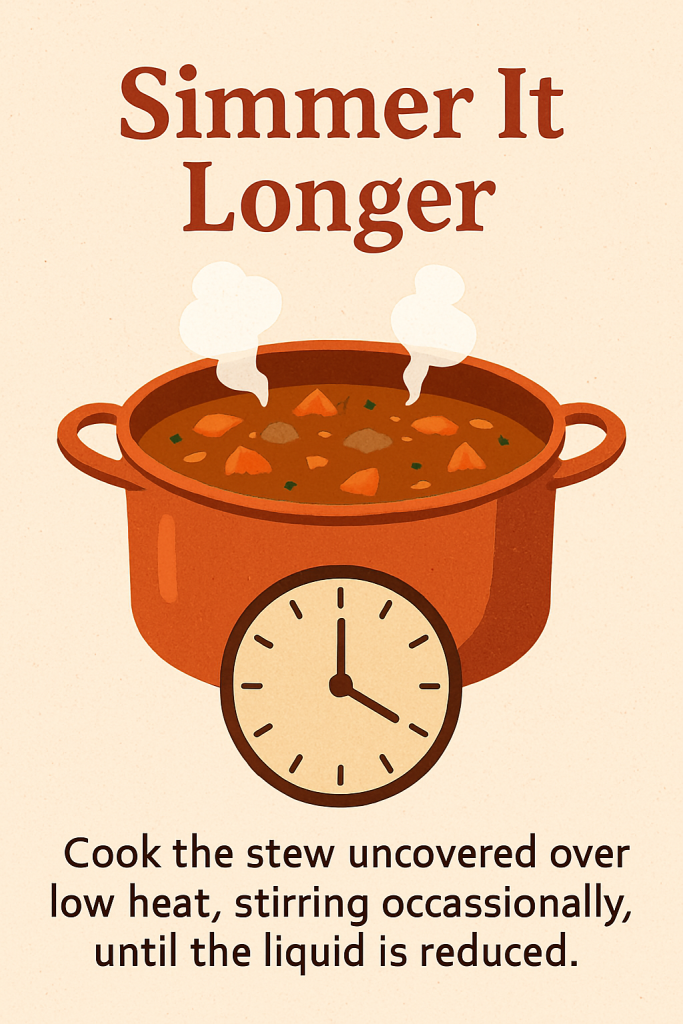
One of the easiest and most natural ways to thicken stews is to simmer uncovered for a long time. As the liquid evaporates, the stew naturally thickens and develops a more concentrated flavor.
How to:
- Keep your stove on low or medium-low heat to maintain a gentle simmer.
- Remove the lid to allow excess moisture to escape.
- Stir occasionally to prevent sticking or burning.
- Be patient—this method can take 15-45 minutes, depending on the amount of liquid in your stew.
Why it works:
Slow cooking can reduce the amount of liquid and intensify the flavor of your stew. Unlike adding thickeners, this method maintains the natural consistency of the dish without changing the flavor.
Best for:
- Rich, slow-cooked stews (e.g., beef stew, vegetable stew, or chili).
- When you prefer a thick stew without adding extra ingredients.
2. Make a Flour or Cornstarch Slurry

A slurry of flour or cornstarch is one of the easiest and most effective ways to thicken stews without affecting the flavor. This method ensures a smooth, lump-free texture and gives your stew the perfect consistency.
How to make the slurry:
- Measurements: Take 2 tablespoons of flour or cornstarch.
- Mix: Whisk together with ½ cup of cold water in a small bowl until it forms a smooth, lump-free mixture.
- Incorporate: Slowly pour the slurry into your simmering stew, stirring constantly.
- Cook: Let the stew simmer for 3-5 minutes until it thickens to your liking.

3. Use a Roux
A Roux is a classic thickening agent made from equal parts flour and fat (butter or oil). To make it:
- Melt the butter in a pan (or heat the oil).
- Stir in equal amounts of flour.
- Cook for a few minutes until golden brown.
- Stir into stews for a rich, velvety texture.
Best for: Cream-based stews or those that need extra depth of flavor.
4. Puree some stew
Instead of adding extra ingredients, you can blend some of your stew for a natural thickening. Here’s how:
- Take out some of the cooked vegetables and some of the broth.
- Blend it until smooth.
- Stir it back into the stew.
- This method keeps the flavor intact while adding body to the dish.
Best for: Thickening without additives for a healthy, complete meal.
5. Add mashed potatoes
Potatoes are naturally starchy, which makes them perfect for thickening. To use this method:
- Boil some potatoes and mash them.
- Stir them into your stew until they’re well blended.
- You can also use leftover mashed potatoes to avoid waste!
Best for: Rustic, hearty stews with a comforting texture.
6. Stir in beans or lentils
Lentils and peas add both thickness and nutrition. There are two ways to use them:
- Stir in cooked beans/lentils.
- Allow whole lentils to cook in the stew until they break down naturally.
Best for: Protein-rich vegetarian stews.
7. Sprinkle in instant potato flakes
Instant potato flakes dissolve quickly, making them a quick and easy way to thicken stews.
- Sprinkle in a little at a time while stirring.
- Wait a few minutes for the stew to thicken.
- Add more if needed.
Best for: Quickly adjust the thickness of the stew without changing the flavor.
8. Use bread or breadcrumbs
Stale bread or breadcrumbs absorb liquid and break down easily in hot stews.
- Tear up the bread or add breadcrumbs.
- Stir until it melts into the stew.
Best for: Traditional, European-style stews.
9. Add heavy cream or coconut milk
Adding cream or coconut milk creates a smooth, rich consistency.
- Use heavy cream to make dairy-based stews.
- Use coconut milk to make dairy-based stews.
Best for: Creamy stews, curries, and chowders.
10. Add a Small Amount of Gelatin
Gelatin is a secret ingredient that professional chefs use to give stews a rich, silky texture. Unlike flour or cornstarch, which can sometimes make stews heavy, gelatin adds thickness without changing the flavor or making them starchy.
How to use gelatin in stews:
- Swell the gelatin – Sprinkle 1 to 2 teaspoons of unflavored gelatin over ¼ cup of cold water and let sit for a few minutes. This will allow the gelatin to absorb the water and soften.
- Dissolve it – Gently heat the swollen gelatin in the microwave or over low heat until it is completely melted.
- Add it to the stew – Stir the melted gelatin into the hot stew and mix well. Let it simmer for a few more minutes so it blends in seamlessly.
Why use gelatin?
- Creates a rich mouthfeel without changing the flavor.
- Adds body and smoothness without the need for flour or starch.
- Gluten-free and low-carb, making it suitable for keto and paleo diets.
FAQ: How to Thicken a Stew
1. What is the fastest way to thicken a stew?
The fastest way to thicken a stew is to use a slurry of cornstarch or flour. Mix 2 tablespoons of cornstarch or flour with 1/2 cup of cold water, then stir it into the boiling stew. It thickens in a few minutes.
2. Can I thicken a stew without flour or cornstarch?
Yes! You can use mashed potatoes, pureed vegetables, blended beans, or bread crumbs, or simmer your stew longer to thicken it without flour or cornstarch.
3. How can I thicken a stew without changing the flavor?
If you want to keep the original flavor, the best option is to reduce the stew by simmering it uncovered, using a roux, or by adding some of the stew ingredients back into the pot.
4. Will my stew be ruined if I simmer it for too long?
If you simmer for too long, the liquid can reduce too much and ingredients like vegetables or meat can become overly soft. Keep an eye on it and stir occasionally to prevent sticking.
5. How do I thicken stews without making them too starchy?
Instead of using flour or cornstarch, try mixing in a small portion of the vegetables in the stew, using mashed beans, or adding a dairy product like heavy cream or coconut milk for a creamy texture.
6. Can I use gelatin to thicken stews?
Yes! Gelatin dissolved in warm water can help create a luxurious, silky texture without affecting the flavor. It works best for meat-based stews.
7. What is the best thickener for gluten-free stews?
For a gluten-free option, use cornstarch, arrowroot powder, potato starch, pureed beans, or mashed potatoes instead of flour-based thickeners.
8. How much thickener should I add to my stew?
Start small! Add a tablespoon at a time, stir, and let it cook for a few minutes. You can always add more, but if you add too much at once, your stew may become too thick or sticky.
9. How do I fix a stew that is too thick?
If your stew is too thick, add a little broth, water, or milk and stir until it reaches the desired consistency.
10. Can I use bread to thicken stew?
Yes! Stale bread or breadcrumbs will absorb liquid and dissolve in the stew, naturally thickening it and adding a rustic touch.

